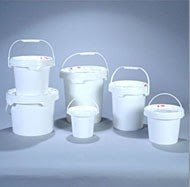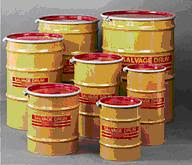

Friday, January 12, 2007
brought to you by V.O.O.P.Z at-
12:00 AM
Thursday, January 11, 2007
Logistical packaging involves product identification, ease of handling, efficient use of storage facilities and transportation vehicles, product protection and environmental friendly.


brought to you by V.O.O.P.Z at-
11:59 PM
FUNCTIONS OF PACKAGING
These will help in reducing costs in terms of:
- reduce the chances of damaging the goods
- save space (more amount of products in the same amount of space)
- reduce on the number of transport journeys (can put more products on one trip)
- durability
- recycling
Therefore, it improves customer service.
brought to you by V.O.O.P.Z at-
11:58 PM






brought to you by V.O.O.P.Z at-
11:57 PM





Different types of Impact Tester
4. Test of Exposure to Temperature and Moisture
This test is done to determine if the packages are able to withstand the different temperature and moisture exposure. The package will be placed inside the container where it will allow the tester to control the different level of moisture and the temperature level.
Temperature and Moisture Tester
5. Rough Handling Test
There are a lot of different kinds of tests found under this category. For example the cushioning test which determine if the package’s cushion is able to withstand the transmission of shock and vibration, shock test which determine the capability of the package to withstand shock and friction test that determine the capability of the package to withstand friction. Stacking test is also being conducted to ensure that the packaging is able to be stacked together to a certain height.


Machines used for the various tests
6. Compression Test
This test determines the capability of the package to be compressed. The packages are placed on the platform and being compressed using a strength that is found in the assigned Packaging Group.

Machines used to conduct compression test
Additional Tests
Other tests that the packages may need to go through include:
In conclusion, there are many other tests that may need to be included during the testing of the packaging, depending on the types of protection that the product needs.
brought to you by V.O.O.P.Z at-
11:56 PM


.gif)
.gif)
brought to you by V.O.O.P.Z at-
11:55 PM
brought to you by V.O.O.P.Z at-
11:50 PM

Single Faced fibreboard is constructed by gluing a flat sheet of linerboard to a sheet of corrugated material which has been passed through a single facer, thus forming it into a series of arches. This ensures that the corrugations will be firmed and will not stretch or flatten.
Burlap Bags


Burlap bags are rugged containers which can be used for a variety of applications due to its strength, durability and bio-degradability features. Some of the more common applications are sand bags, grain sack races or quality bags with jute draw strings for presentations.
The competitive advantage of burlap bags are being its flexibility, durability and biodegradable functions. In addition, it is economical and most desirable for rip-rap application. Burlap bags are ideal for shipping and storing metal and hardware products. It absorbs moisture, oil and grease while ensuring air circulation.
Multi-Wall Paper Bags
Multi-wall paper bag is an eco-friendly packaging which is fully recyclable. It is used for packaging of tea, dry minerals, carbon black, cement and various other products.
The bags are made of multiple layers of kraft paper which gives it great strength for being a strong package. The inner layer of the bag is laminated or specially coated to protect the contents from harmful contamination and to keep the contents fresh. Multi-wall paper bags are scientifically proven to preserve freshness, reduce infestation, resist moisture, lock in odors and to reduce or eliminate chemical preservatives.
Steel Cans

Steel cans are made from tinplate steel, which is produced in basic oxygen furnaces. A thin layer of tin is coated onto the can's inner and outer surfaces. This is to prevent rusting and to protect food and beverage flavours as it is important for steel cans to be free from any contaminants.
Steel cans are commonly used for containing food and beverage, paint, aerosols, solvents and other flammable and combustible products. Steel cans account for more than 90 percent of food cans, and more than 600 shapes, styles and sizes of containers are used. Steel cans can be recycled for next consumption which in turn integrated into cost reduction programme.
The element in the widespread use of steel is its diversity in material properties and exceptional formability. Packaging steels can be bent, shaped and folded into a multitude of configurations. Deep drawing, flattening and forming characteristics offer endless possibilities for applications that require strength and lighter weight. Steel cans allow superior exterior designs that cater to customers’ demands. The painted cans above appear to be more attractive than the non painted ones. Customized painted cans are able to drive the market with ascending sales.
Shrink Wrap
Shrink wrap is used for load stabilization. In shrink-wrapping, a film or bag is placed over the load and then heat is applied to shrink the film or bag; allows irregular loads to be stabilized; manual or automatic; most shrink-wrap applications are being replaced by stretch-wrapping. In stretch-wrapping, a film is wound around the load while the film is stretched; allows irregular loads to be stabilized; manual or automatic; as compared to shrink-wrapping, stretch-wrapping has lower material, labor, and energy costs.
Cushioning - White Poly Foam Wrap Non-perfed
The low-density polyethylene foam is constructed from millions of tiny, closed-air cells to provide superior cushioning, surface protection, and simple void filling. Compared to other foams, polyethylene foam is tough, crushproof, and prevents bottoming out.
Plastic Strapping
The high-quality plastic strapping is economical and is ideal for unitizing and palletizing shipments. Plastic strapping that shrinks is used to keep loads from becoming loose during shipment.
Pails
1. Plastic Pails and Lids

The plastic pails are dedicated to safe storage and shipment of products. It is durable and has a high density polyethylene construction that is able to withstand extremes temperature up to 82.2°C (180°F). Plastic pails range in sizes from 1 gallon to 6.5 gallons and are used to transport a variety of products for industries including paints, food, construction supplies, janitorial supplies, lubricants, specialty chemicals, pool products, pet products, and retail applications.
2. Lifelatch Pails
These UN approved Lifelatch Pails are ideal for packaging solids. They come with a screw on lid and are available in a variety of sizes and colors.
3. Biohazard Lifelatch Pails
Biohazard Lifelatch Pails offers a variety of sizes that range from 1 gallon to 6.5 gallons. It is approved for the collection and shipment of biohazard waste. It is produced with a user friendly screw on lid for easy stack ability and storage.
The plastic openhead pails are manufactured in a variety of sizes ranging from 1 gallon to 4.25 gallons. The plastic openhead pails provide non-gasket, easy open covers or standard covers features.
5. Plastic Tighthead Pails
The plastic tighthead pails have threaded bodies and covers which allow the cover to be screwed onto the pails. The locking teeth prevent the cover from unleashing the pails in transit.
6. Steel Pails
Steel pails can transport safely and economically almost all classes of hazardous materials. Its resistance to fire makes it an ideal package for flammable and combustible liquids. Steel pails are strong, safe, versatile and eco-friendly. These benefits provide steel pail customers with cost savings and special marketing advantages. Steel pails are environmentally friendly as it can be recycled and the industry makes use of its scrap in producing new steel.
Steel pails are able to accept the widest range of products because of its strength, high UN performance and array of compatible interior linings and fittings. In addition, steel pails ensure safety in the field, classified as a valuable product and are stackable in the warehouse.
7. Tighthead Steel Pails
Tighthead Steel Pails are available in sizes ranging from 3 gallons to 20 liters. The tighthead steel pails are UN rated for packaging of hazardous materials such as solvents and other chemicals. Pails are available with various fittings in the head and with various exterior colors and interior linings.
Drums
1. Plastic Drums
Plastic drums are made from a high molecular-weight, high-density polyethylene resin and manufactured to high standards of quality and consistency. This material makes the drums extremely strong and rigid, allowing easy handling and low shipping costs. Plastic drums provide savings in warehousing storage space because they are stackable and can be stored outside without rusting. In addition, total packaging costs are decreased because plastic drums are reusable.
2. Tighthead Plastic Drums
Tighthead Plastic Drums are available in sizes of 15 gallons, 30 gallons and 55 gallons. They are available with standard size fittings. The drums are UN/FDA approved, they are approved for domestic and international shipments. In addition, tighthead plastic drums are reusable, recondition able, and recyclable.
3. Plastic Open-Headed Drums
Openhead plastic drums are approved for domestic and international shipments. The features of openhead plastic drums include heavy-duty construction, molded in hand holds, sturdy interstacking, UN/FDA approval, locking metal ring, and they are reusable, recondition able, and recyclable.
4. Steel Drums
Steel drums are ideal for all types of liquid chemicals including hazardous chemicals. Steel drums are available in sizes of 30 gallons and 55 gallons. The types of steel drums include lined or unlined drums, tightheads, openheads (with a variety of lid and ring types), UN/DOT certified drums, and 55 gallon hazardous waste drums. Steel drums can be used by a number of oil, solvent and chemical companies. In addition, the openhead hazardous waste drums can be used for a wide variety of environmental clean-up situations.
5. Steel Open-Headed Drums
Steel Open-Headed drum has an open top with a lid and is primarily dedicated to dry products. Steel Open-Headed drums are constructed using high quality carbon steel. These open head containers meet UN design type testing requirements.
6. Steel Closed-Headed Drums
Steel Closed-Headed drums are utilized for containing liquid products. It does not have a lid, it is filled with an open hole (as shown in the picture above). Steel drums are designed, manufactured, and certified to meet UN requirements under DOT 49 CFR. They are supplied with rust-inhibitor interior or chemical-resistant epoxyphenolic lining.
7. Poly Drums
Poly drums are manufactured in sizes of 30 gallons and 55 gallons drums, both available as tighthead or openhead drums. These are ideal for racing fuel, automotive fluids, perfumes, soaps, food grade additives, etc. Poly drums are customized for animal feeders and water tanks, deer pellet feeders, etc.
8. Fibre Drums
Fibre drums will are used for storage and transport of dry products. It is ideal for transporting food or other hygienic products. Fibre drums are also suitable for transporting and storing a wide variety of chemicals, powders, pastes and solid products and also provide excellent protection for textiles, films, adhesive tapes, pharmaceuticals and plastic resins. Fibre drums are available in capacities up to 500 litres. In addition, drums are certified to verifiable levels of cleanliness.
9. Salvage Drums
Salvage drums are designed to house damaged and leaking drums and are regulated by the Department of Transportation (DOT). If a company or shipper has a leaking drum or solvents used on a spill or leak and they wish to ship them across public roads, salvage drums must be used. The Salvage Drum is a drum which is larger than the leaking drum and allows the leaks to be placed inside the salvage drum for safe shipment to a disposal or treatment facility. Salvage drums must pass, at a minimum, standard UN requirements for drums shipping solids as well as 3 PSI air leak proof test.
brought to you by V.O.O.P.Z at-
11:49 PM
The Faces...





The Unique Us... (:
3 Human beings and 2 Angels!(:
Voo Jun Wei: A hungry man. Always craving for food almost every hour.
Ong Kai Neng Candy: A shopaholic. Virtue 大姐大 (big sister).
Ong Wei Siong: The Banana doing split.
Peh Pei Yu: The IT expert. The Secretary.
Zhuang Jielin: The Spokes-person for Mentos the Freshmaker.
Tagboard (:
Useful Quick Links... (:
Our Friends' Blogs (:
Material Handling Equipment
Logistic Packaging
Storage System
Credits (: